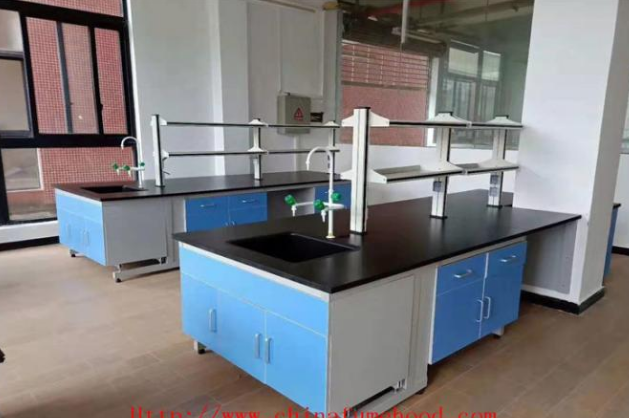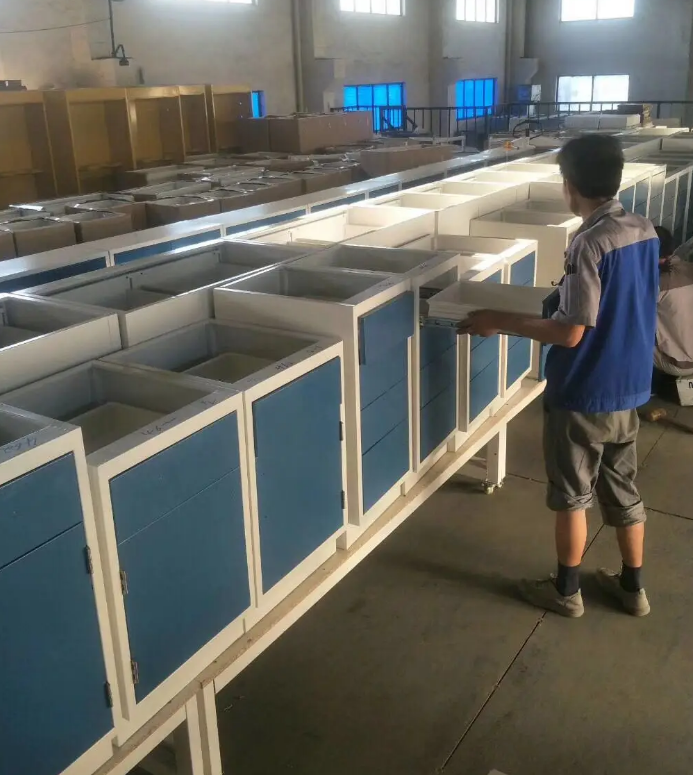When it comes to designing a laboratory, every detail matters, especially when selecting the surfaces that will witness countless groundbreaking experiments. The choice of material for a lab table must not only foster a safe and sterile environment but also withstand the rigors of aggressive chemical reactions, extreme temperatures, and relentless mechanical impacts. It’s a decision that seemingly balances science itself on the very surfaces where research unfolds.
The crux of optimal lab table surface material rests on several factors: chemical resistance, durability, non-reactivity, ease of maintenance, and even aesthetics. Amidst various materials available in the market, those produced by specialized manufacturers, including the Chemistry Lab Bench factory from China, hold significant standing due to their commitment to quality and standards, essential in scientific environments.
To understand the superiority of one surface over another, delving into specific materials widely recognized for their resilience and compatibility with laboratory conditions is essential. These materials, each with unique properties, cater to the varying demands of different types of labs.

Epoxy Resins: When it comes to popularity and functionality, epoxy resin surfaces stand out. Composed of a mixture of hardeners and resins, they form a solid, continuous product that boasts a remarkable chemical resistance. This non-porous material does not absorb liquids, making it easy to maintain and clean, a vital attribute in preventing contamination between experiments. Its seamless surface prevents bacteria and mold growth, ensuring an ultra-hygienic environment conducive to scientific work.
Moreover, epoxy resin is highly durable and extremely resistant to heat, impact, and most corrosive chemicals, addressing several safety concerns in the lab. The material’s longevity, combined with its ability to withstand daily wear and tear, makes it a cost-effective solution for research facilities. This reliability is one reason why entities like the Chemistry Lab Bench factory from China have heavily invested in providing top-tier epoxy resin work surfaces.
Phenolic Resins: Crafted by applying heat and pressure to layers of paper or fabric, saturated with phenolic resin, these surfaces are robust and versatile. The curing process creates a sleek, hard, and ultra-dense material capable of enduring a variety of harsh chemicals and high temperatures, similar to epoxy resins. Phenolic resin tops are lightweight, making them easier to install and maneuver if lab configurations change over time.
Stainless Steel: In scenarios where hygiene takes precedence, stainless steel is often the go-to choice. Predominantly used in biological and clinical laboratories, stainless steel’s non-porous nature allows for easy sterilization, a critical requirement in spaces sensitive to contamination. Though it may be susceptible to scratches and a bit reactive to some aggressive chemicals, its resistance to heat and rapid temperature changes compensates for these shortcomings.

Trespa TopLab (Solid Phenolic): These high-pressure compact laminates offer extraordinary performance for educational, laboratory, and institutional applications. They are resistant to a wide array of aggressive chemicals and are not affected by moisture, making them ideal for environments where cleanliness and hygiene are a priority.
Granite and Stone: Certain labs opt for natural resistance by using granite or stone surfaces. These materials are incredibly durable and can withstand heavy loads, making them suitable for labs utilizing significant equipment. However, their porous nature could harbor bacteria and other contaminants if not sealed properly, and they may degrade upon exposure to harsh chemicals.
The decision on the best surface often follows an assessment of the laboratory’s primary function. For instance, research labs dealing with corrosive substances and requiring heat-resistant surfaces might favor epoxy or phenolic resins. In contrast, biological labs could opt for stainless steel for better sterilization.
The role of reputable suppliers, such as the Chemistry Lab Bench factory from China, is pivotal in this aspect. They provide a range of options, allowing labs to select materials that best suit their operational needs. These manufacturers often work closely with lab managers and designers, offering customized solutions based on specific activities, safety standards, and durability requirements.
Beyond the immediate functional aspect, the choice of material impacts long-term maintenance and sustainability. Easier to clean surfaces with resistance to staining and physical damage can reduce long-term costs and ensure the lab remains operational over extended periods. The material’s eco-friendliness, gauged by its recyclability and energy required for production, also influences decision-making for environmentally conscious facilities.
Procuring materials from certified manufacturers guarantees adherence to international standards and regulations, ensuring the safety and efficacy of the lab environment. This process involves rigorous testing of the materials, documentation of their resistance to various chemicals, and certification of their quality. Such meticulous attention to detail is typical of established suppliers, which underscores the importance of sourcing from reputable vendors.
The selection process, however, does not end with choosing the material. Installing these surfaces requires precision and expertise. This stage is where collaborations with experienced suppliers come into play. These experts, equipped with insights from past installations, can preemptively address any challenges, ensuring the lab is functional and up to code.
In the grand scheme of laboratory setup, the surface material is not just about aesthetics or immediate functionality. It is about creating an environment that inspires confidence among those who toil on these surfaces, making discoveries that could very well alter the course of science. Whether it’s a sterile, clinical environment, a harsh chemical laboratory, or a high-temperature setting, these surfaces lay the foundation for scientific breakthroughs. Thus, investing in the best material is, by extension, investing in the future of research and innovation.